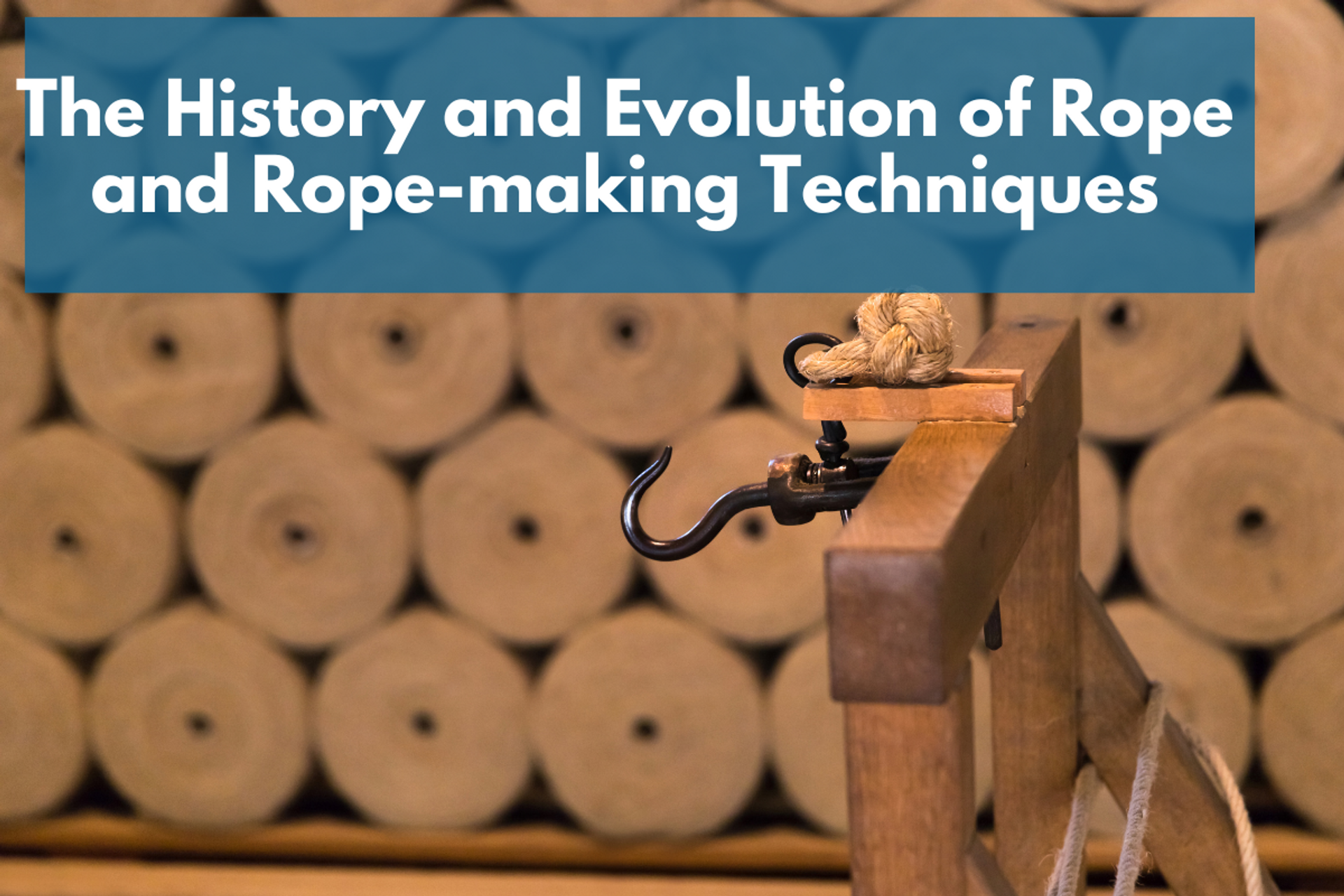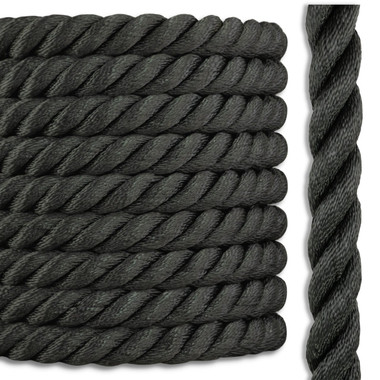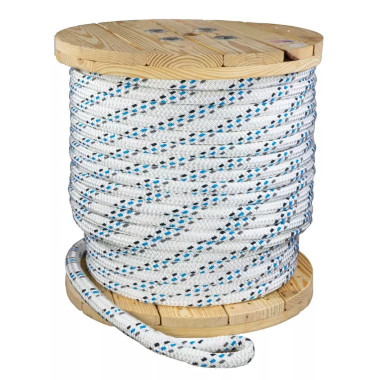The History and Evolution of Rope and Rope-Making Techniques
Estimated 0 min read
Although it’s unnecessary to know the history of rope in order to buy or use a good rope, it is interesting to understand how this ancient tool has continually improved over the many years since its creation. Despite it being one of the oldest inventions known to man, rope-making techniques have continued evolving right up to modern day.
In fact, rope has played a key role in human history—from it’s origins in ancient civilizations, to it’s key role on sailing ships and even modern construction; rope plays an important part in our ability to shape the world around us. The evolution of rope-making techniques is a story of human ingenuity, resourcefulness, and adaptation. Today, ropes are stronger, more durable, and more specialized than ever, but the journey to get here has taken centuries.
So, let’s take a look at how rope-making techniques have changed throughout history and how we went from primitive methods to the industrial-strength cords we rely on today.
How Was Rope Invented?
Rope-making dates back to the dawn of human civilization, and its origins are as old as mankind itself. Early humans were practical and resourceful, using materials from their environment to create tools that would help them survive. Researchers believe that early ropes were made from plant fibers such as grass, flax, animal hair, or reed. These fibers were probably twisted together by hand, creating a strong and flexible cord that could be used for a variety of uses.
The first rope-making techniques were likely incredibly simple. Think of the way you might twist a piece of string in your hands—this is pretty much how it all started. Early humans would take fibers from plants and twist them together to form a rudimentary rope. The key to making strong rope was to combine multiple fibers into a single strand, increasing its strength and durability.
Ancient Egyptians were some of the first to master the art of rope-making. They used fibers from plants like papyrus and flax, along with animal sinew, to create ropes for use in construction and transportation. Ropes likely played a huge role in the construction of the pyramids. Workers used ropes to haul heavy stones and materials, and the Egyptians even developed complex knots for securing and lifting loads.
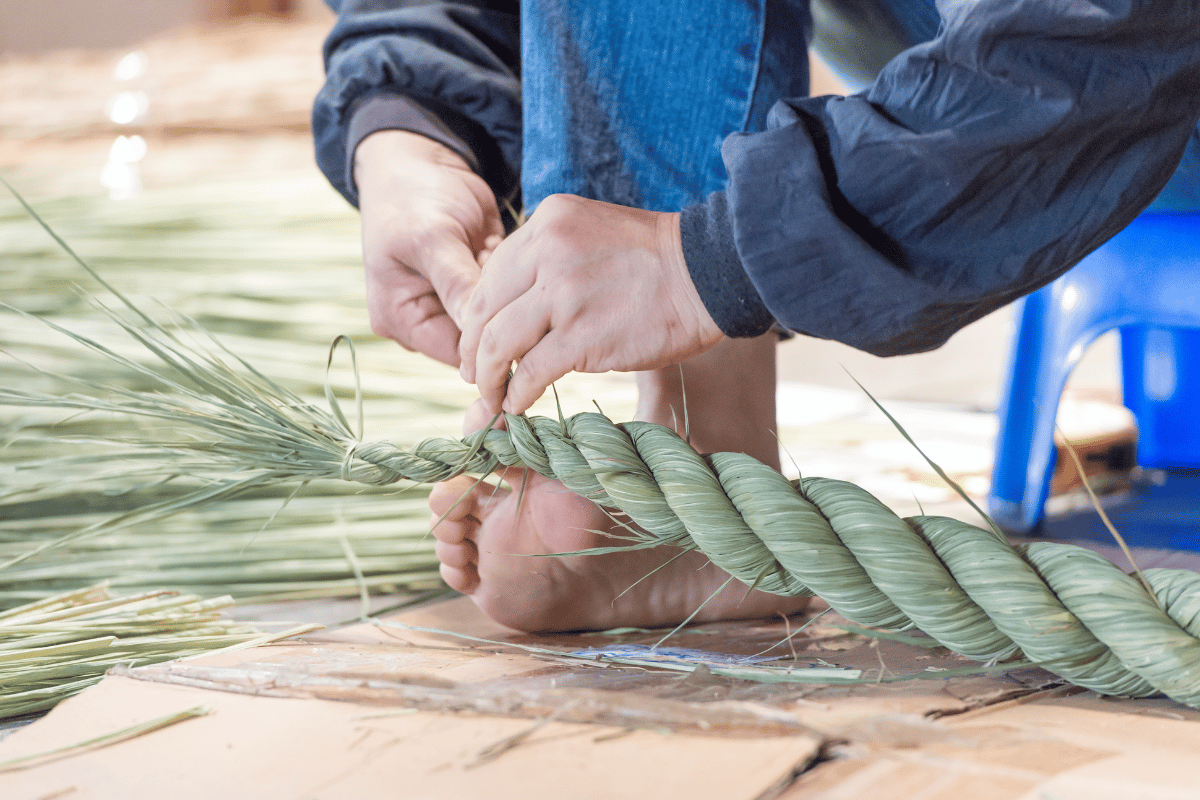
The Rise of Natural Fibers and Traditional Rope-Making
As civilizations developed, so did the techniques for making ropes. In the ancient world, natural fibers were the primary material used for rope-making, and each culture had its own approach to the craft. For example, the Greeks and Romans used hemp, while the Vikings relied on fibers from nettles and other plants. The process was generally the same: fibers were harvested, processed by soaking, and then twisted or braided together to form strong ropes.
By the Middle Ages, rope-making had become a specialized craft, with workshops and guilds dedicated to the trade. Long, straight, covered lanes called “ropewalks” were used to produce rope, allowing the fibres to be twisted together with hand tools at various points along the construction of the rope. Roperys of the time often caught fire, due to the highly flammable hemp dust that proliferated there. Still, rope-making continued full speed as the necessity for rope was great—a single sailing ship required 30+ miles of rope to rig her sails. The Historic Dockyard in Chatham, UK is one such ropewalk that is still operational, though now as a museum.
These ropes tended to be very heavy since materials and processes were still fairly rudimentary. Abacá(Manila rope) and Hemp were common materials, and both could wear relatively quickly at sea, leading to increased sizes and tarring of hemp ropes to prevent rot.
The ropemakers of the day made ropes for everything from ships' rigging to the construction of buildings, to farming tools, and beyond. The demand for high-quality, durable ropes was higher than ever before.
Industrialization and the Birth of Modern Rope-Making
The Industrial Revolution in the 18th and 19th centuries brought major changes to the rope-making industry. With the rise of factories and mechanization, rope-making became faster and more efficient. The traditional methods of hand-twisting fibers were replaced by machines that could spin, twist, and braid fibers at a much quicker pace.
These machines were often steam powered, some of these remaining in use until the 1950s when they were replaced with electric motors. At the same time, the demand for rope fell off, and many roperys closed in the 1900s as the demand for ropes on ships lessesened, as coal and diesel powered ships replaced rigging and sails.
However, rope was still used extensively in industry, agriculture, and shipping during this time. This is when the concept of "wire rope" was also born. Wire rope, made from steel wires twisted together, quickly became the go-to option for many industrial applications, including construction and mining.
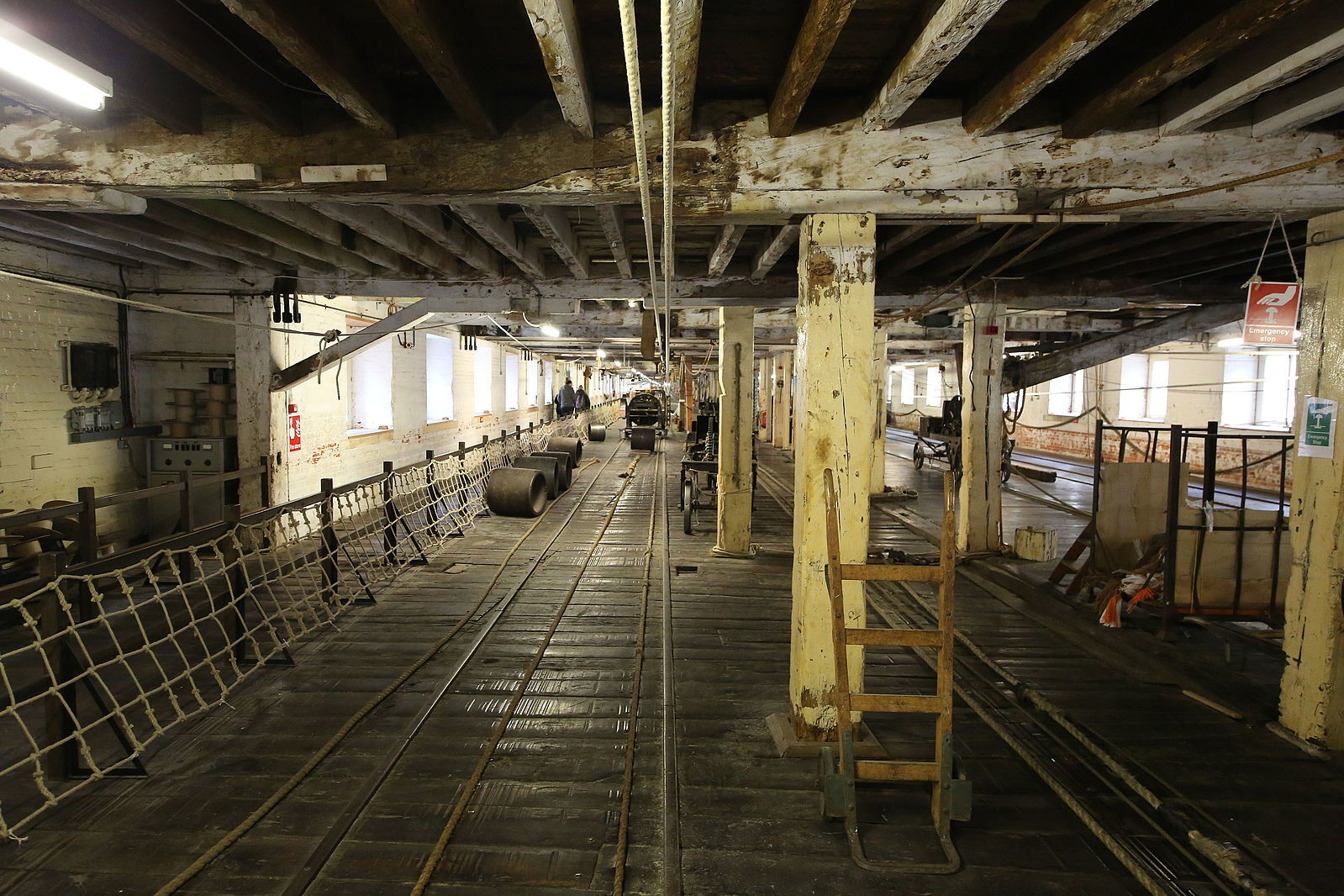
A Ropery. Image by Geni, CC BY-SA 4.0, via Wikimedia Commons
The Evolution of Synthetic Rope Materials
While natural fibers like hemp and flax dominated rope-making for centuries, the 20th century saw a major shift with the development of synthetic materials. The rise of plastics and petrochemicals opened up new possibilities for rope production. Synthetic fibers, such as nylon, polyester, and polypropylene, were introduced and quickly gained popularity due to their strength, flexibility, and resistance to environmental factors like UV light and water.
Nylon, in particular, became widely used in the production of ropes for everything from climbing to sailing. Nylon ropes are known for their high tensile strength and elasticity, making them ideal for applications where stretchability and shock absorption are important. Polyester ropes, on the other hand, are lighter than natural fiber ropes and resist water absorption, making them perfect for marine environments.
The introduction of these synthetic materials was a game-changer, not only making ropes stronger and more durable but also more affordable and easier to mass-produce. Today, synthetic ropes are used in nearly every industry, from construction to sports, to even space exploration.
Modern Rope-Making: High-Tech Ropes for Specialized Uses
Today, rope-making has evolved to the point where specialized ropes are manufactured for very specific applications. Advances in material science have led to the development of ropes that are stronger, lighter, and more durable than ever before. For example, modern ropes made from materials like ultra high molecular weight polyethylene (UHMWPE) are incredibly strong, lightweight, and resistant to heat, making them ideal for military, aerospace, and rescue operations.
The manufacturing process for modern ropes has also become more advanced. Machines now use computer-controlled technology to create ropes with exacting precision. This allows for the production of ropes with varying thicknesses, strengths, and flexibilities to meet the needs of specific industries. Additionally, new techniques like braiding, coating, and splicing have made ropes even more versatile, allowing them to perform in a wider range of environments.
For example, climbing ropes today are engineered with a particular type of weave that allows them to handle high-stress situations while remaining flexible and easy to handle. These ropes are designed to be lightweight but incredibly strong, giving climbers the safety they need to ascend heights safely. Similarly, marine ropes are now often coated with a special UV-resistant coating, ensuring that they can stand up to years of exposure to saltwater and sunlight without degrading.
Conclusion: From Hand-Spun to High-Tech
The history and evolution of rope-making techniques is a testament to human ingenuity and adaptability. From the earliest handmade ropes crafted from plant fibers to the high-tech ropes used in today’s most demanding industries, rope-making has come a long way. The craft has been shaped by advancements in materials, technology, and human needs, ensuring that ropes continue to play a vital role in everything from construction to adventure sports.
Whether you're using rope for a DIY project, sailing the open seas, or climbing a mountain, it’s important to recognize the legacy and craftsmanship that goes into making every strand of rope. While today’s ropes are stronger, more specialized, and more reliable than ever before, they still carry with them the knowledge and techniques passed down through centuries of rope-making history. And that's something worth appreciating the next time you pick up a rope.
